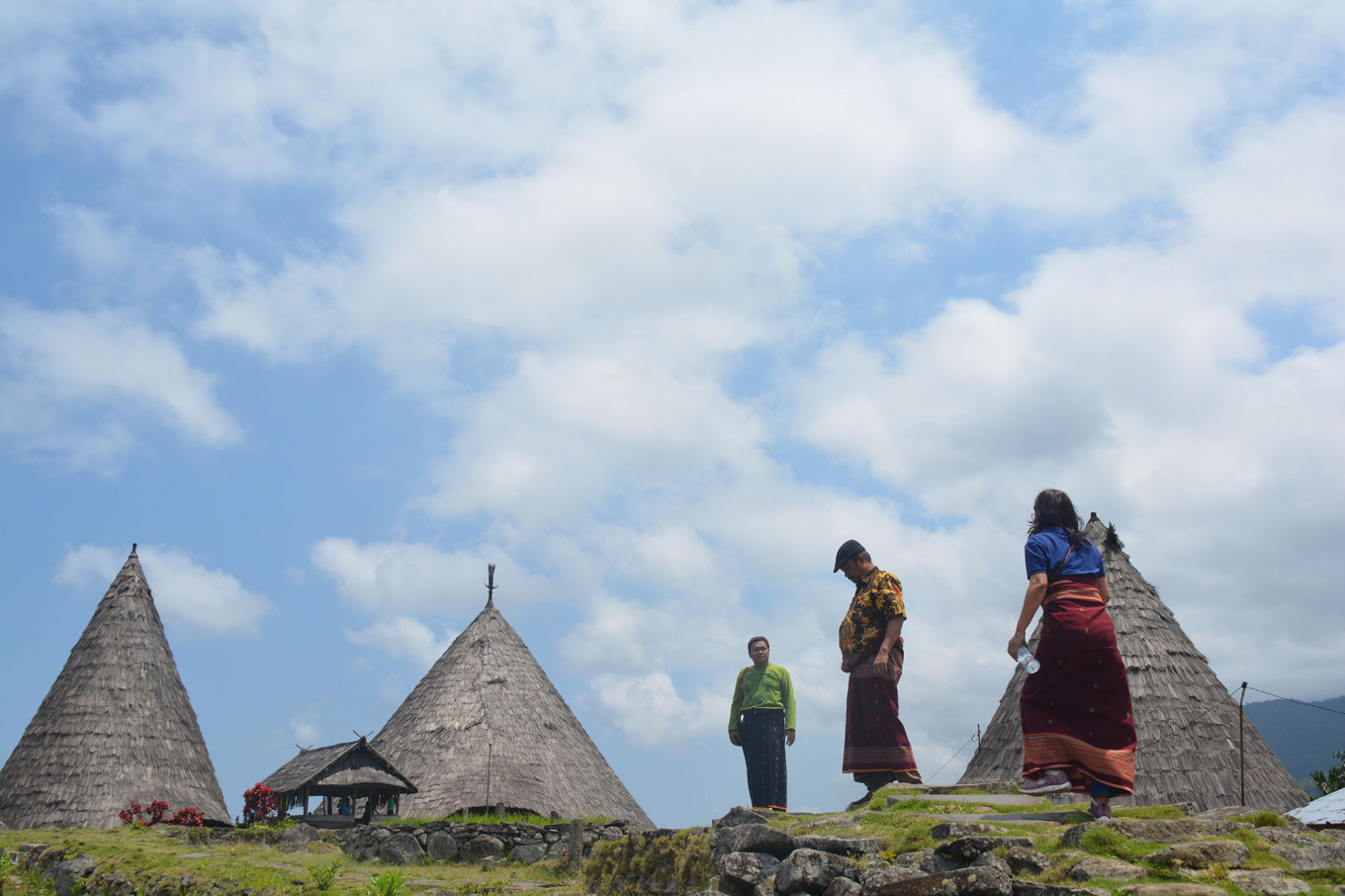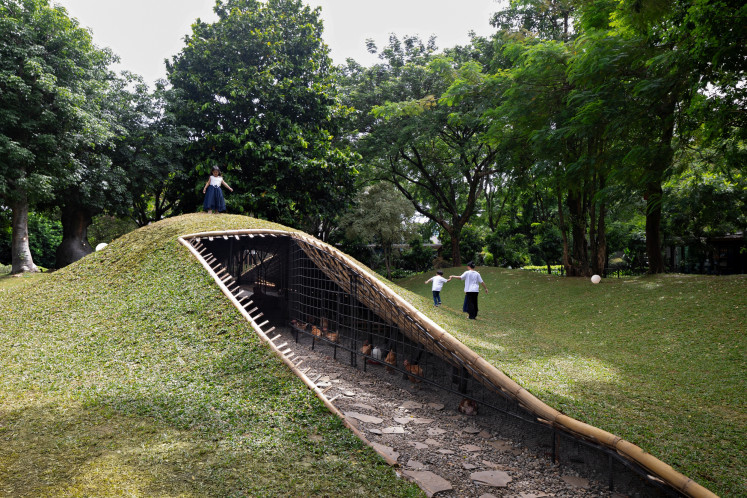Popular Reads
Top Results
Can't find what you're looking for?
View all search resultsPopular Reads
Top Results
Can't find what you're looking for?
View all search resultsExploring Todo customary village a 'to do' when visiting West Flores
The customary village of Todo (pronounced "toh-doh") is said to be the birthplace of the Mbaru Niang traditional houses.
Change text size
Gift Premium Articles
to Anyone
N
estled in a valley in West Satarmese subdistrict, Manggarai regency, on Flores, East Nusa Tenggara, Todo customary village is said to be the birthplace of the mbaru niang traditional houses. The neighboring village of Wae Rebo was bestowed the UNESCO Asia-Pacific Heritage Award for Cultural Heritage Conservation in 2012 for preserving the mbaru niang, cone-shaped houses with roofs made of palm leaves over a wooden frame.
Titus Jegadut, 52, a Manggarai regency tourism office staffer and tour guide, told The Jakarta Post in early February that Todo village was once the center of the ancient Todo kingdom and the home of Minangkabau (Minang) migrants.
It is said that a group of Minangkabau people migrated from West Sumatra to establish Todo village when they arrived many centuries ago to the area now known as Manggarai regency. Mashur, a prominent figure respected among the Minang community for establishing the village, is buried in a grave at the heart of Todo village.
“Foreign and Indonesian visitors frequently come to this traditional village [Todo] aside from Wae Rebo. Professors and students from many universities in Indonesia and other countries also come on cultural and anthropological research programs,” said Titus.
He said that the traditional houses in Todo originally resembled rumah gadang, the traditional house of the Minang culture, but that they transformed over the centuries into the conical structures seen today.
Aside from Todo's historical and cultural heritage, whether of the Minang or the Manggarai cultures, the village's location is also one of its major attractions, as it appears suspended on the boundary between the heavens and Earth.
Read also: Weaving to preserve heritage, make ends meet
Center of handwoven textiles
Titus said that as well as visiting Todo’s unique and rare traditional houses, foreign and Indonesian visitors also came to Todo to explore its handwoven textiles. Many visitors bought textile products from shawls to lipa songke fabrics, which bear the unique motifs of Todo village.
“One way to promote Todo textiles is by requiring visitors to wear textiles with songke Todo motifs when visiting traditional houses,” said Titus.
The head of the East Manggarai cooperatives, industry and trade agency, Basilius Teto, told the Post that Todo village and Lamba Leda subdistrict were the handwoven textile centers of the greater Manggarai area. The textiles carried Todo motifs and Lambaleda motifs, as well as original motifs created by weavers in villages across the region.
“There are 56 weavers groups in East Manggarai. The weavers produce 1,344 pieces each year, excluding shawls,” said Basilius.
He also said that the East Manggarai administration had introduced a policy for all local civil servants to wear traditional East Manggarai textiles. Although the fabrics are expensive with prices ranging from Rp 400,000 (US$28.42) to Rp 2 million for their time-consuming production process, wearing the textiles is part of the regency's strategy to promote the local weaving culture.
“Weavers work from Monday to Friday at the weaving [factory] provided by the East Manggarai administration, and they rest on Saturdays and Sundays. The regency administration has supported the weavers by providing thread and equipment. Today, a weaver can produce a 4-meter by 1.2-meter length of fabric in 14 days,” Basilius said.
Professor Mohammad Hamsal of Bina Nusantara University Jakarta, who is Minangkabau, told the Post that some traditional houses in the Todo valley resembled traditional houses in Padang, West Sumatra. The textile motifs, wall paintings and traditional decorations in the Manggarai culture also resembled decorative elements in the gadang houses of Minang culture.
Despite their exterior cone shapes that departed from the shape of gadang, Todo's traditional houses were built with a central column that was also found in rumah gadang architecture. (mut)











